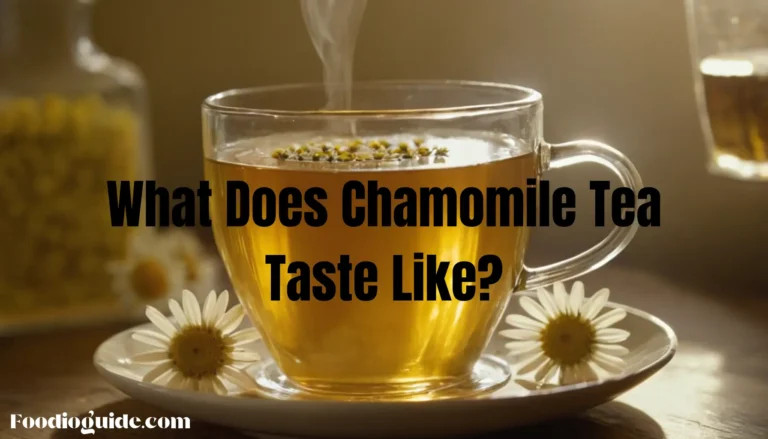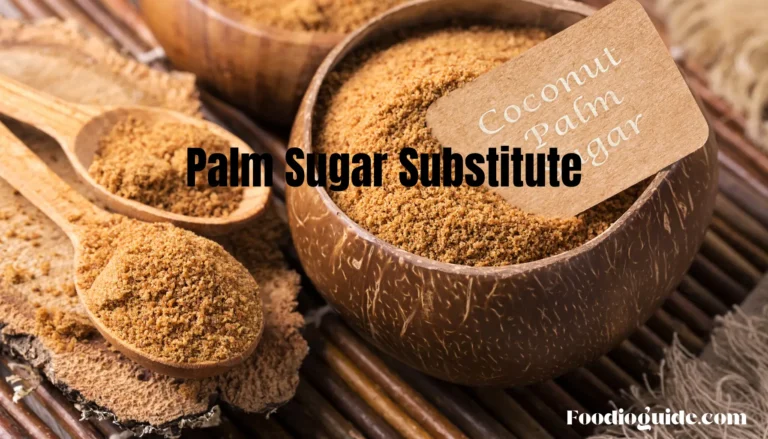Benedictine Substitute: The Perfect Alternatives for Your Recipes
If you’re an avid cook or cocktail enthusiast, chances are you’ve come across recipes that call for Benedictine. This unique herbal liqueur, with its sweet, spiced, and slightly honeyed flavor, is a favorite among chefs and mixologists. But what happens when you don’t have Benedictine on hand? Finding a Benedictine substitute that perfectly balances flavor and versatility can save the day. In this blog, we’ll explore the best alternatives to Benedictine, their characteristics, and how to use them in your recipes effectively.
What is Benedictine?
Before diving into substitutes, it’s essential to understand what Benedictine is and why it holds such a special place in kitchens and bars worldwide. Benedictine is a French herbal liqueur made from a blend of 27 herbs and spices. Its flavor profile combines sweetness with subtle earthy and botanical undertones, making it a key ingredient in many cocktails like the Vieux Carré and recipes that require a hint of complexity.
Flavor Profile of Benedictine
Benedictine’s rich and complex flavor combines honey’s sweetness, warm spices, and earthy herbal notes, creating a unique and irreplaceable profile. It enhances both dishes and drinks, making them gourmet-quality delights. Choosing the right Benedictine substitute ensures that your recipes maintain this depth and balance, especially when the original is unavailable. Understanding the nuances of Benedictine’s flavor—from its layered sweetness to its botanical undertones—is essential for selecting substitutes that replicate its role in cocktails, desserts, and savory dishes alike. A proper substitute can preserve the intended taste of your creations while offering versatility for different applications.
Why Look for a Benedictine Substitute?
There are several reasons you might need a substitute for Benedictine:
- Availability: Benedictine might not always be available in your local stores.
- Cost: It’s a premium liqueur, which can be expensive for some.
- Dietary Restrictions: Some recipes may require non-alcoholic alternatives.
- Personal Preferences: You might want a similar flavor without the alcohol content.
Having a suitable benedictine substitute ensures you can recreate the flavors without compromising your dish or drink.
Top Substitutes for Benedictine
1. Drambuie
Drambuie is a Scottish liqueur with a similar honey-sweet flavor and herbal notes. It’s an excellent Benedictine substitute in cocktails and desserts.
Using Drambuie as a Substitute
Drambuie combines Scotch whisky, heather honey, and spices into a harmonious blend, making it a superb Benedictine substitute for cocktails like the Rusty Nail or Vieux Carré. The whisky base adds a subtle smoky undertone that enhances the depth of any drink. To substitute Benedictine with Drambuie, use it in equal proportions while considering its unique character. This ensures a balanced flavor profile, providing the sweetness and herbal complexity that recipes demand.
2. Chartreuse
Chartreuse, available in green or yellow varieties, is another excellent alternative. Made by French monks, it has a complex herbal flavor profile akin to Benedictine.
Using Chartreuse as a Substitute
Green Chartreuse, with its bold and intense herbal notes, offers a strikingly distinct profile, while Yellow Chartreuse provides a milder, sweeter alternative. Both are crafted by French monks and serve as excellent substitutes for Benedictine. Depending on your recipe’s requirements, select the variant that aligns best with the flavor you wish to achieve. When using Chartreuse as a benedictine substitute, begin with half the amount called for in the recipe. Gradually adjust the quantity to suit your taste, ensuring that the herbal complexity and sweetness complement your dish or drink without overpowering it. This approach helps maintain balance, whether you’re mixing a cocktail or preparing a flavorful culinary creation. By carefully choosing and measuring, Chartreuse can seamlessly replace Benedictine while adding its unique character to your recipes.
3. Dom B&B (Benedictine and Brandy)
This blend of Benedictine and brandy is a ready-made alternative that captures the essence of Benedictine with added warmth from the brandy.
Using Dom B&B in Recipes
Dom B&B offers a harmonious blend of Benedictine and brandy, capturing the original liqueur’s essence with added warmth. This makes it an excellent Benedictine substitute for cocktails that require both a sweet herbal flavor and a touch of richness. Its balanced sweetness ensures it works seamlessly in drinks like the Vieux Carré or classic brandy-based desserts. Dom B&B’s versatility extends to culinary applications, where its rich flavor enhances both sweet and savory dishes. For optimal results, use it as a one-to-one replacement for Benedictine, adjusting slightly for personal taste. This substitute not only saves time but also delivers depth and complexity to your recipes without compromising on quality.
4. Homemade Herbal Infusions
If you prefer a non-alcoholic Benedictine substitute, creating a homemade herbal infusion is an excellent choice. Combine honey, dried herbs like thyme or sage, and spices to mimic Benedictine’s flavor.
Crafting a Homemade Substitute
To create a flavorful Benedictine substitute, simmer equal parts honey and water with herbs and spices like thyme, sage, cinnamon, or cloves. Once the mixture has infused thoroughly, strain it and allow it to cool. This homemade infusion brings depth to mocktails, desserts, and savory dishes, replicating Benedictine’s complexity. Whether used as a drizzle over cakes or as a base for cocktails, this substitute balances sweetness with herbal notes effectively. Adjust the choice of herbs to match the profile needed for your recipe.
Using Benedictine Substitutes in Cocktails
Cocktails are where Benedictine shines, so choosing the right substitute is crucial. Here are some popular cocktails and how to modify them with substitutes:
Vieux Carré
Replace Benedictine with Drambuie or Dom B&B for a similar rich flavor. Adjust the ratios slightly to accommodate the substitute’s sweetness or alcohol content.
Benedictine Sour
For this cocktail, opt for a mix of Yellow Chartreuse and a touch of honey syrup to replicate the flavor of Benedictine.
Non-Alcoholic Alternatives to Benedictine
Sometimes, alcohol-free substitutes are necessary for recipes or personal preferences. Here are some great non-alcoholic options:
1. Honey and Herbal Tea
A blend of honey and robust herbal tea creates an ideal Benedictine substitute, offering a similar balance of sweetness and complexity. Chamomile tea brings floral notes, while rooibos tea provides a deeper, earthy undertone, both complementing the honey’s natural sweetness. This substitute works perfectly for mocktails, desserts, or even glazes for savory dishes. By combining honey with these teas, you can replicate Benedictine’s unique flavor profile without alcohol, making it suitable for all preferences and recipes.
2. Spiced Honey Syrup
To create a rich and flavorful Benedictine substitute, infuse honey syrup with warm spices like cinnamon, nutmeg, and cloves. This simple syrup captures the sweet and spiced essence of Benedictine, making it ideal for desserts, mocktails, and even coffee-based beverages. By simmering these spices in honey syrup, you can achieve the perfect balance of complexity and depth to elevate your recipes. This alcohol-free alternative is not only versatile but also enhances the natural sweetness and aromatic profile of your creations, replicating Benedictine’s signature taste.
See also: Jim Beam Substitute
Cooking with Benedictine Substitutes
Benedictine isn’t just for cocktails; it’s also used in cooking. Here’s how to use substitutes in culinary applications:
Desserts
To replicate Benedictine’s distinct flavor in your recipes, use spiced honey syrup. Combining honey with warm spices like cinnamon, nutmeg, and cloves creates a syrup that mirrors the sweet and spiced notes of Benedictine. This substitute is particularly effective in desserts like cakes, custards, or sauces, adding both depth and sweetness to the dish. Its versatility extends to marinades and glazes, offering a balanced complexity without the alcohol content. By adjusting the spice levels, you can customize the syrup to suit your recipe’s specific needs, ensuring a seamless alternative to Benedictine.
Savory Dishes
For savory dishes like marinades or glazes, Drambuie or a homemade herbal infusion is an excellent substitute for Benedictine. These alternatives capture its herbal complexity while blending seamlessly with other flavors, ensuring the dish remains well-balanced and flavorful.
How to Choose the Right Benedictine Substitute
When selecting a substitute, consider these factors:
- Flavor Profile: Match the sweetness and herbal notes as closely as possible.
- Alcohol Content: Decide whether you need an alcoholic or non-alcoholic substitute.
- Application: Cocktails, desserts, and savory dishes may require different substitutes.
Alternative Liqueurs for Unique Flavors
For those willing to explore beyond the usual options, alternative liqueurs like Amaro and Cointreau offer intriguing possibilities as Benedictine substitutes. Amaro, with its pronounced bitterness and herbal undertones, adds depth to cocktails and savory dishes. Cointreau, on the other hand, provides a bright, citrus-forward profile, ideal for desserts or lighter cocktails. Tailoring these alternatives to your recipe needs broadens your flavor palette, allowing you to create unique twists on traditional dishes. Experimenting with these distinctive substitutes not only compensates for the absence of Benedictine but also introduces new dimensions to your culinary or mixology creations, enriching your experience.
Regional Variants and Local Ingredients
Incorporating regional ingredients like locally produced honey or herbal infusions can significantly elevate your recipes, adding both authenticity and a personal touch. These localized substitutes are excellent at replicating Benedictine’s complex flavor while bringing unique regional characteristics to your dishes or drinks. For instance, lavender honey introduces floral notes that complement desserts, while rosemary-infused syrups offer herbal depth to savory glazes. By exploring ingredients native to your region, such as wildflower honey or indigenous herbs, you can craft substitutes that enhance your recipe’s flavor profile. Experimentation with these localized options can result in unique variations that not only mirror Benedictine’s richness but also reflect your culinary creativity.
Pairing Substitutes with Food
Pairing your Benedictine substitute thoughtfully with food can significantly elevate your dish’s flavor profile. Drambuie, with its sweet and smoky notes, complements rich foods like grilled meats or chocolate desserts, adding depth and complexity. On the other hand, lighter substitutes like herbal teas work well with fresh, delicate dishes such as salads or fruit-based desserts, bringing subtle herbal undertones that enhance the meal without overpowering it. Proper pairing ensures each element of your dish contributes to a harmonious and well-rounded dining experience. Experiment with combinations to discover unique flavors that elevate your culinary creations.
Experimenting with Homemade Liqueurs
Creating a homemade liqueur can be an exciting and rewarding experience for adventurous culinary enthusiasts. By combining dried herbs, citrus peels, and a selection of warm spices with a neutral alcohol base, you can craft a personalized substitute for Benedictine. The process involves allowing the mixture to infuse over several weeks, which helps develop the rich and complex flavor profile synonymous with Benedictine. During this time, you can taste and adjust the balance of ingredients to replicate the unique sweetness, herbal depth, and spiced notes of the original liqueur. This method not only provides a custom substitute tailored to your preferences but also allows for the addition of unique elements like regional herbs or spices to make the creation truly your own. Whether used in cocktails or cooking, a homemade liqueur offers a versatile and flavorful alternative to Benedictine.
Exploring Cultural Substitutes
Across the globe, different cultures have crafted their own herbal liqueurs and infusions, many of which can serve as excellent Benedictine substitutes. Italian Amaretto, with its almond undertones, and Greek Ouzo, known for its anise-flavored profile, are just a couple of examples that bring unique flavors to the table. These cultural liqueurs maintain the complexity and depth needed for various recipes while offering a chance to introduce regional flair. Whether you’re preparing cocktails or enhancing desserts, researching and experimenting with these options allows you to tailor flavors to your needs. Embrace the diversity of global ingredients and explore how these substitutes can bring new dimensions to your culinary creations.
Using Substitutes in Baking
Benedictine’s sweet and spiced flavor is a favorite in baking, adding depth to cakes, cookies, and pastries. For a seamless substitute, spiced honey syrup or herbal teas work wonderfully. Spiced honey syrup, infused with cinnamon, nutmeg, and cloves, mirrors the warmth of Benedictine. Similarly, herbal teas like chamomile or rooibos bring subtle complexity to desserts. These alcohol-free options allow you to replicate the richness of Benedictine while catering to all preferences. Whether enhancing a creamy custard or elevating a simple cookie, these substitutes ensure your baked goods retain their intricate and delicious flavor profile without the need for liqueur.
Adapting Cocktails for Non-Alcoholic Options
For non-drinkers, transforming classic cocktails into mocktails using benedictine substitutes ensures inclusivity. Try honey-infused herbal teas with a splash of citrus to recreate the rich depth of Benedictine in alcohol-free drinks. This approach keeps flavors intact for all guests to enjoy.
Conclusion
Finding the perfect Benedictine substitute doesn’t have to be daunting. Whether you choose Drambuie, Chartreuse, Dom B&B, or a homemade herbal infusion, there are plenty of options to suit your needs. By understanding the flavor profile of Benedictine and the characteristics of its substitutes, you can confidently recreate your favorite recipes without compromising on taste.






